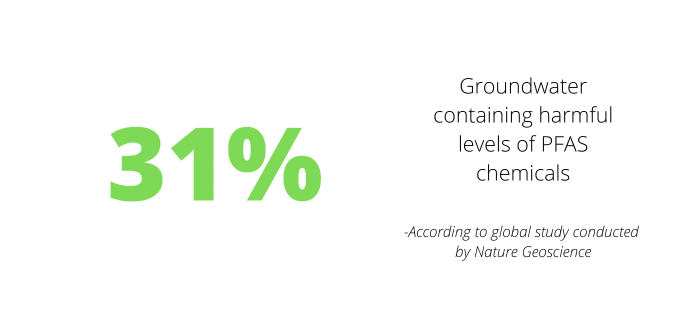A new global study published by Nature Geoscience has revealed a pervasive amount of PFAS chemicals found in groundwater samples with particularly alarming levels of the harmful substance in the United States.
- PFAS is an acronym that describes a type of man-made chemical that has been used in manufacturing and consumer products since the 1940s.
- Referred to as “forever chemicals” because they sometimes take hundreds or thousands of years to break down, PFAS chemicals have proven to have the potential to cause health risks such as cancer, hypertension, high cholesterol and other issues.
PPAI Media has repeatedly covered “The Chemical Dilemma” as it pertains to promotional products. Many promo suppliers are in the process of evaluating how to exit PFAS manufacturing in the coming years.
- Last month, PPAI Media reported on the fine line that promo firms must toe between sustainability and chemical regulation.

“Setting Off Alarm Bells”
The study involved 45,000 water samples from around the world. The results revealed an amount of PFAS chemicals that is more than previously assumed.
- 31% of groundwater samples tested in areas that were not near any obvious source of contamination contained PFAS levels considered harmful by the Environmental Protection Agency.
- 16% of surface water samples had similarly harmful levels of PFAS.
- The U.S, and Australia showed particularly high concentrations of PFAS in water samples.
In the aftermath of this finding, the EPA has announced new regulatory limits on PFAS chemicals in drinking water, which will be accompanied by $1 billion in implementation and hopes to reduce exposure to the chemicals for 100 million people.
Denis O’Carroll, an author of the study and professor of civil and environmental engineering at the University of New South Wales, says the study “set off alarm bells, not just for PFAS, but also for all the other chemicals that we put out into the environment. We don’t necessarily know their long-term impacts to us or the ecosystem.”
“Once they’re released into the environment, it’s incredibly difficult to clean them up, if not impossible in many cases,” says David Andrews, a senior scientist at Environmental Working Group. “They can be removed from drinking water, but the ultimate solution is to not use them in the first place, especially in places where there are clear alternatives.”
RELATED: Sustainability Vs. Chemical Regulation: Promo Firms Must Toe A Fine Line
Promo Perspective
This finding comes five months after an EPA ruling under the Toxic Substance Control Act that imposes a nearly $50,000-per day penalty for violating PFAS regulations.
- Reporting PFAS levels will be due in 2025.
- There is no exception for small businesses or small volume.
Promo companies should already have a plan in place to adhere to these regulations.
The recent global study is indicative of the fact that PFAS chemicals are a problem for which the scope and the cause extends far outside of promo. However, it is the type of revelation that will likely stir justified fear and action in many policymakers in coming years.
- Last October, the Product Responsibility Action Group – a PPAI volunteer group – met with U.S. Consumer Product Safety Commission in Washington D.C. to discuss PFAS regulations, among other topics.
Considering uncontaminated water is a crucial necessity to human life, the new study frames the problem as all the manufacturing that produces PFAS, eventually leading to its presence in water.
“I’m not in any way trying to say that we should not be drinking water,” O’Carroll says. “It’s more that I’m trying to say, from a societal point of view, we need to be careful what we put into the environment.”


